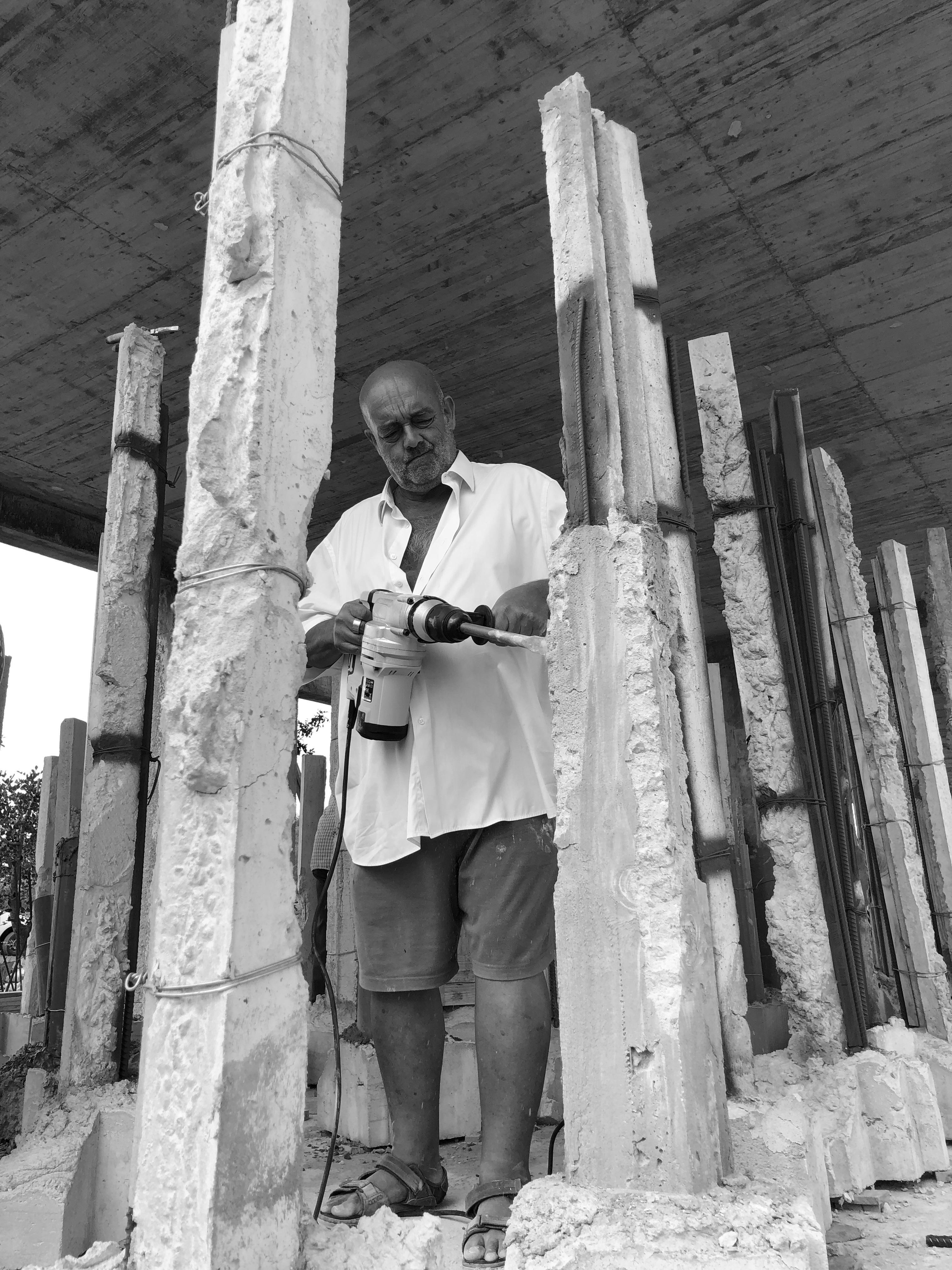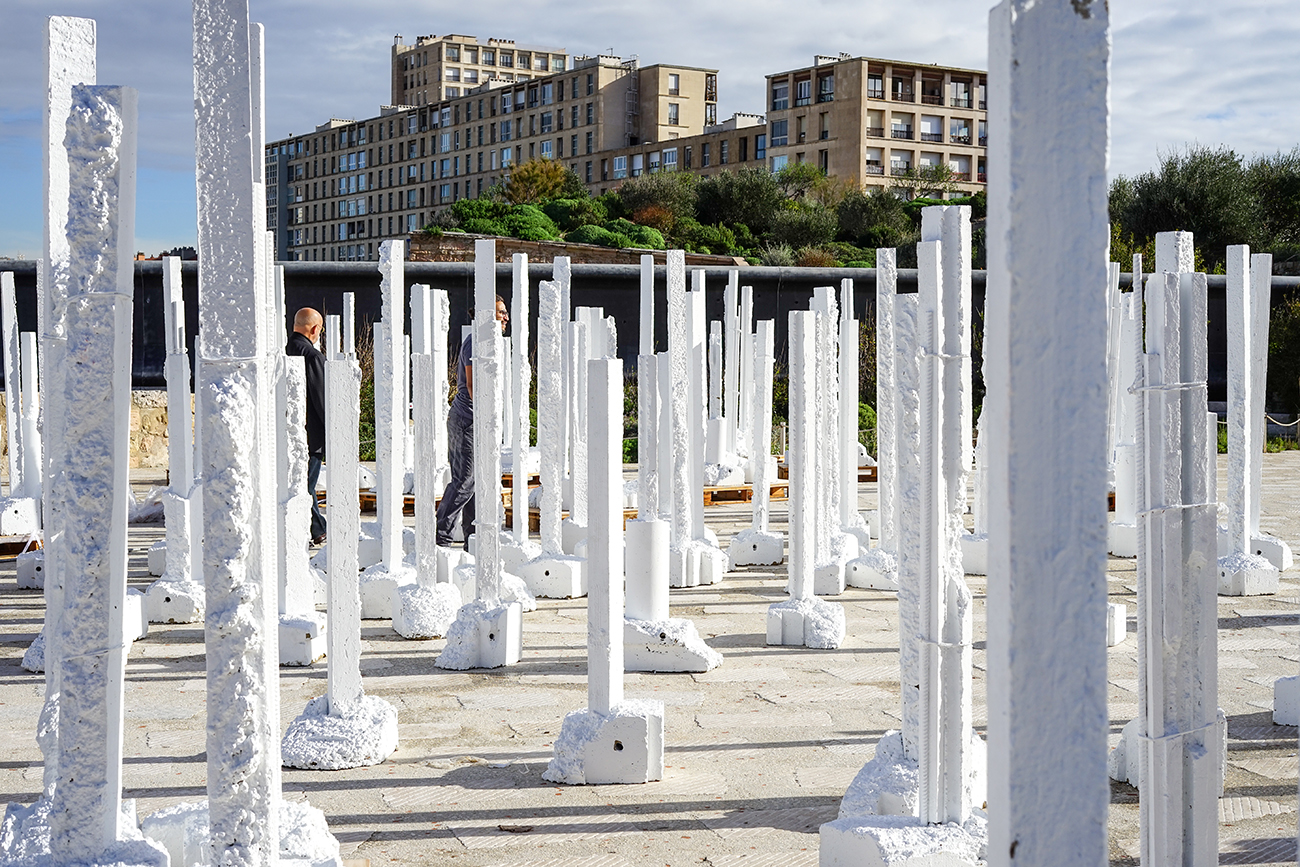The Forest (Marseille)
Pedro Cabrita Reis
Mucem, fort Saint-Jean—
Place d'Armes
|
From Wednesday 31 October 2018 to Sunday 16 June 2019
A unique work, specially created for the Mucem at the place d'Armes of the fort Saint-Jean
253 concrete, iron and wood structures covered in white paint stand at the place d'Armes of the fort Saint-Jean: The Forest (Marseille) is a sculpture by the Portuguese artist Pedro Cabrita Reis, a unique work specially created for the Mucem.
Made from industrial materials, this concrete Forest is set in the Mucem’s landscape, between architecture and garden, linking space and horizon in an intimate dialogue.
Of varying height (between 140 cm and 190 cm), the 253 structures conjure up anthropomorphic resonances, that are perceptible behind a possible (and necessarily ambiguous) reference to the outline of tree trunks. Are they a group of dead trees? Have they been ravaged by fire? Are they petrified? So long as they are not a group of people? Forests have always inspired a type of fear, similarly moreover to that aroused by gatherings of crowds.
-
Interview with the artist Pedro Cabrita Reis
-
Mucem (M.)
Why did you want to set up a forest in the mineral space at the place d’Armes of the fort Saint-Jean?
Pedro Cabrita Reis (P. C. R.)
To go through or to “lose oneself” in a forest – this always brings about in us a type of introspection and a process of rediscovery of oneself. This is a little like what can happen in the way we relate to a work of art.
M.
Concrete, iron, paint – this forest built thanks to industrial materials is also in a way a reminder of the city...
P. C. R.
The prime symbol of human construction, cities like forests are “organic” structures that experience several life cycles. There are cities and forests that have disappeared and have been replaced by other cities and forests, at the same time both similar yet different. Beyond all of this, but also like a symptom of these permanent transformations, there is art, the place where a forest can be constructed in iron and be a reminder of the city…
M. Lastly, the 253 structures can also be treated as a group of people, as a crowd… What was your inspiration for this analogy?
P. C. R. The analogies cannot be found in the work of art itself; they are created by the viewer’s eye. The purpose of art is to increase insight, and the nuances of our emotional and rational networks are near infinite. So much so in fact that they enable us to arrive at the conclusion that 253 concrete, iron and wood objects painted white, can be treated as a forest, as well as like a crowd...

